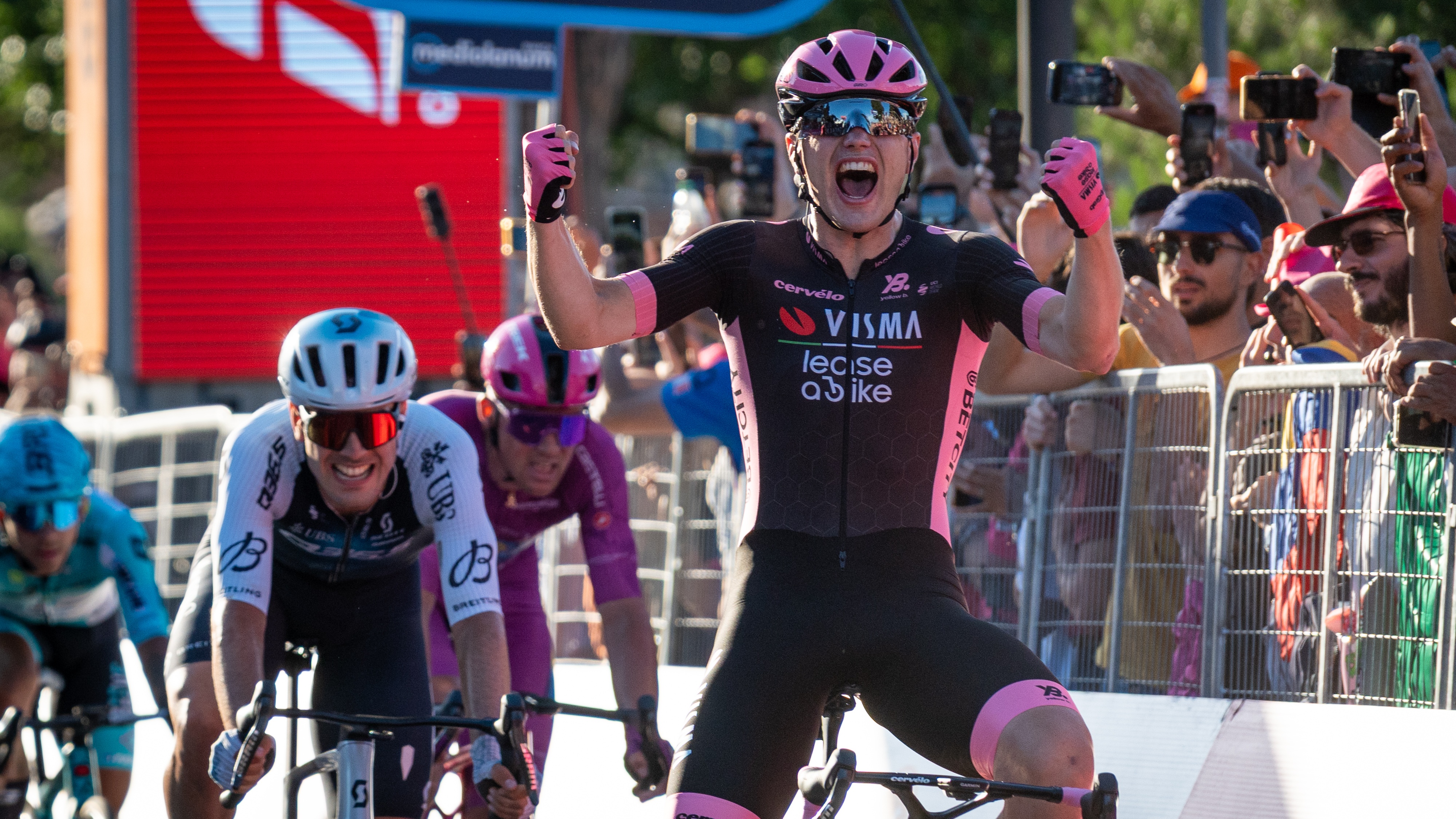All Your Couch-to-5K Questions, Answered

We may earn a commission from links on this page.
If you’re not a runner, but you’d like to be, the classic way to start is with a couch-to-5K program (available in convenient podcast or printable chart form, or in any of dozens of apps. But we know you’ll have plenty of questions along the way, so here’s what you need to know.
Is couch-to-5K a good plan to start running?
Yes and no. A lot of people have seen good success with it, but it also has its drawbacks, which I’ve written about here. Since it has you mix walking and running, with the goal of phasing out the walk “breaks,” a lot of people come away from the program feeling like there’s something wrong with walking during a training run or a race. Which is nonsense, of course—plenty of runners walk from time to time. It’s still part of the run.
Another problem is that it holds up “5K” as the goal (that’s a distance, 3.1 miles), but actually trains you to run for 30 minutes. You should not expect to run five kilometers in 30 minutes by the end of the program; many people can, but it’s OK if you can’t. The good news is that if you’re able to run for 30 minutes straight, you will be able to run a 5K race, even if it takes more than 30 minutes and involves a little bit of walking.
So what are the advantages of couch-to-5K? The biggest one is that it’s very accessible. You only need to manage a one-minute jog to get started. You also have a structured plan to support you, instead of relying on your own whims and/or willpower to get you to lace up your shoes. The plan also teaches by experience. It doesn’t give you specific instructions for how fast to run, but you’ll figure out for yourself what kind of effort you need to put in to get the runs done.
Here’s the advice I’ll give, if you want to make a snap decision now: if you’re truly torn between this program and another one that has been recommended to you—say, the Hal Higdon Novice 5K program—go with the other one. It’s probably better. But if you don’t know where else to start, and you’re curious about couch-to-5K, just start couch-to-5K already.
What happens in a couch-to-5K program?
On your first day, you run for one minute. Just one! Then you walk for 90 seconds. Then you run for one minute again. After 20 minutes of this back-and-forth, you’re done running for the day. (The program also recommends five minutes of warmup and cooldown, which can be walking.)
By the end of the program—usually nine weeks, with three workouts per week—you’re able to run for half an hour without stopping. You can graduate by running a 5K race (five kilometers works out to 3.1 miles), which will take about 30 to 40 minutes for an average beginner, faster if you were in good shape to start with.
The original couch-to-5K program was available on a now-defunct website called Cool Running, although there were plenty of walk-and-run programs that preceded it. The most famous iteration comes from the UK’s National Health Service, which still offers an app today, although it isn’t currently available in the U.S. Note that there are multiple versions of the program out there, with some ramping you up more gradually than others. The NHS one is probably the most classic, but honestly, they’re all pretty similar and they’re all fine.
Am I too out-of-shape if I get winded right away?
Whether you feel out of breath is a measure of the intensity of your running. Every runner, even an Olympic medalist, has a speed that makes them feel out of breath. And everyone, even you, has a speed that is so slow it feels easy. Or at least, easy-ish.
Here’s the program’s best kept secret: it’s not really about gaining endurance, although that’s a nice benefit. It’s about learning to pace yourself. By increasing the run times and decreasing the walk breaks in between, you’ll teach yourself to run slower. If you run slow enough, you can cover the entire five kilometers without needing to take a walk break.
What gear do I need to start?
At first, not much. Some shoes that don’t hurt your feet when you run; some clothes that cover your body comfortably. A sports bra if you need one. We have a guide here to the very basics of becoming a runner, but the first step is: don’t overthink it.
As you progress, you may want to visit a running store to try on a bunch of different shoes. No matter what the person at the store says, do not buy anything that feels uncomfortable. If they try to steer you to certain shoes based on your foot shape or how you run, make sure to also ask to try on a neutral shoe. (Research suggests neutral shoes are best for most of us.)
What should my heart rate be during a couch-to-5K run?
It doesn’t matter! I know that zone 2 running is trendy, so people often try to run their couch-to-5K intervals in zone 2. That’s a nice thought, but it’s not mandatory and it’s not the point here.
Remember, the only training metric in couch-to-5K is running time. If today’s schedule has you doing five-minute run segments, you are doing the program correctly if you run five minutes at any pace, at any heart rate. That can be zone 2, or zone 5, or anything in between. (Your heart rate zones aren’t necessarily calibrated correctly, anyway; that’s something you can worry about when you have more experience under your belt.)
If I’m not getting any faster, am I doing it wrong?
No. Whether you’re still on a couch-to-5k plan, or you’ve finished and are trying to run on your own a few days a week, your sessions are training runs, not races. Even elite runners spend most of their time doing easy, boring miles.
Slow runs help you get faster. Want to tell if you’re improving? Run a 5K race (or time yourself on a distance of your choice, say one mile) and then train at an easy pace for a month or two. Try another race or time trial, and then you’ll be able to tell how much you’ve improved. When it’s not race day, just put in the easy miles.
Do I have to rest on the rest days?
Couch-to-5k programs typically ask you to run three days a week. If you’re not used to any exercise at all, or if you find yourself sore or tired after running days, honor those rest days.
But if you’re already active, there’s no problem working in other exercise around those three runs. Don’t add any more running, because your body needs time to get used to the specific stresses of running. (Your tendons, ligaments, and bones will thank you for the gradual buildup.) But feel free to swim, bike, lift weights, or whatever else makes you happy.
Why does it make you jump from an eight-minute run to a 20-minute run? I’m scared!
Ahh, the infamous W5D3. You just worked your way up to eight-minute runs, and now this thing thinks you can run for 20 minutes straight?? We’re barely halfway through the program! How can it expect you to do two-thirds of your goal distance?
Take a deep breath. You can do this. By the time you’re facing down the 20-minute run, you’ve already done eight-minute intervals. And I promise you, from the bottom of my heart: if you can do eight minutes, you can do 20. It’s the same skill, the same pace or very similar. The barrier is mental.
Just go out and do it. Start out extra slow, and take something with you: a one-minute walk break, to be used whenever you need it. A special gift from me to you. If you hit 10 minutes and really need to walk, go ahead. Beth said you can. (The secret is that you aren’t going to need it, but you’ll feel better just knowing that you have that option.)
What do I do if I “fail” a run?
It’s a training program. There’s no such thing as failure. You got your butt out there and trained, didn’t you?
If the program feels like it’s progressing too fast, many people will choose to repeat a day or even a week of the program. This probably isn’t really necessary; see what I said above about facing down a scary run. The point of the scary ones is to make you say “oh crap, I better slow down and really pace myself well to get through it.” Let it scare you. Use that to motivate you to make decisions. But, sure, repeat a week or a day if you really need to.
What if I miss a run, or a whole week?
Don’t view the nine-week schedule as ironclad. It’s fine to swap a rest day with a workout day, even if it means you’re running two days in a row. And if you miss a week, it’s OK to back up and repeat that week or the one before it. Your body is still getting the benefits of exercise no matter which week you’re on. Some people need a little more time than others.
You may find that partway through the program, you’re ready for more. I did a couch-to-5k type of program when I first started running, and one day I decided to try running as slowly as possible to see if I could skip the walk breaks. It worked, and I completed the full workout without needing to slow down. From then on, I knew I didn’t need the program anymore; I could just go out for a run and, well, run. You’ll get to that point too, if you just stick with it.
What do I do after couch-to-5K?
First, celebrate the accomplishment! When you started, you could only run for a minute at a time. Now, you can do 30 minutes straight! That’s huge!
The whole point of couch-to-5K is to be an on-ramp to a “real” running routine. Now you’re in the habit of running for 30 minutes, three times a week. That’s a respectable nine miles per week. Feel free to stick with this schedule (it meets the 75+ minutes of “vigorous” exercise that is recommended for health), or slowly add days or distance. If you can run nine miles per week, you can certainly run 10 or 12. And before long, you’ll be ready for more. You can pretty much go anywhere from here: train for longer distances, faster paces, take up trail running, really anything your heart desires. If you were a runner, what would you do? Because you are one now!
The only thing to not do is to restart the couch-to-5K program. That would be like getting onto the highway only to take an immediate exit and circle on and off the ramp over and over. There’s no progress in that. Not even if you do it at a slightly faster speed.
Instead, either set yourself a weekly mileage target like we discussed above, or pick a new goal to train for. If you find distance addictive, consider training for a 10K. Here’s a beginner 10K training plan that would be a great next step. If you have fun with that, you might see a half marathon in your future. Or consider racing another 5K, but aiming to beat your time from before. Here’s a plan that gets a little bit spicy, with weekend long runs of five miles to start, and some speedwork in the middle of the week. Whatever you choose, enjoy! You’ve earned it.











